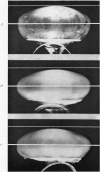Abstract
1. A method of determining the distribution of capsular moulding pressure is described. This includes:
(a) measuring the decrease in polar depth of the lens from photographed lens profiles before and after the capsule has been cut around the entire equator of the lens,
(b) measuring the elastic properties of the lens substance by subjecting the lens to known centrifugal forces and photographing the polar strain so produced.
2. A method of determining the relationship between capsular and lenticular strain is described. This includes (a) measuring the elastic properties of the capsule (b) measuring the elastic properties of the lens substance and (c) measuring the profiles of the photographed lens.
The ratio of the strain of lens substance to capsule is expressed as a dimensionless parameter, the lens number.
3. The decrease in the amplitude of accommodation with increasing age is proportional to the lens number divided by the square of the radius of the accommodated lens, assuming that the movement of the capsulozonular attachments of the lens remains unimpaired in the ageing eye.
4. Ageing changes in the human crystalline lens are sufficient to account for a total loss of accommodation by the age of 61 years.
Full text
PDF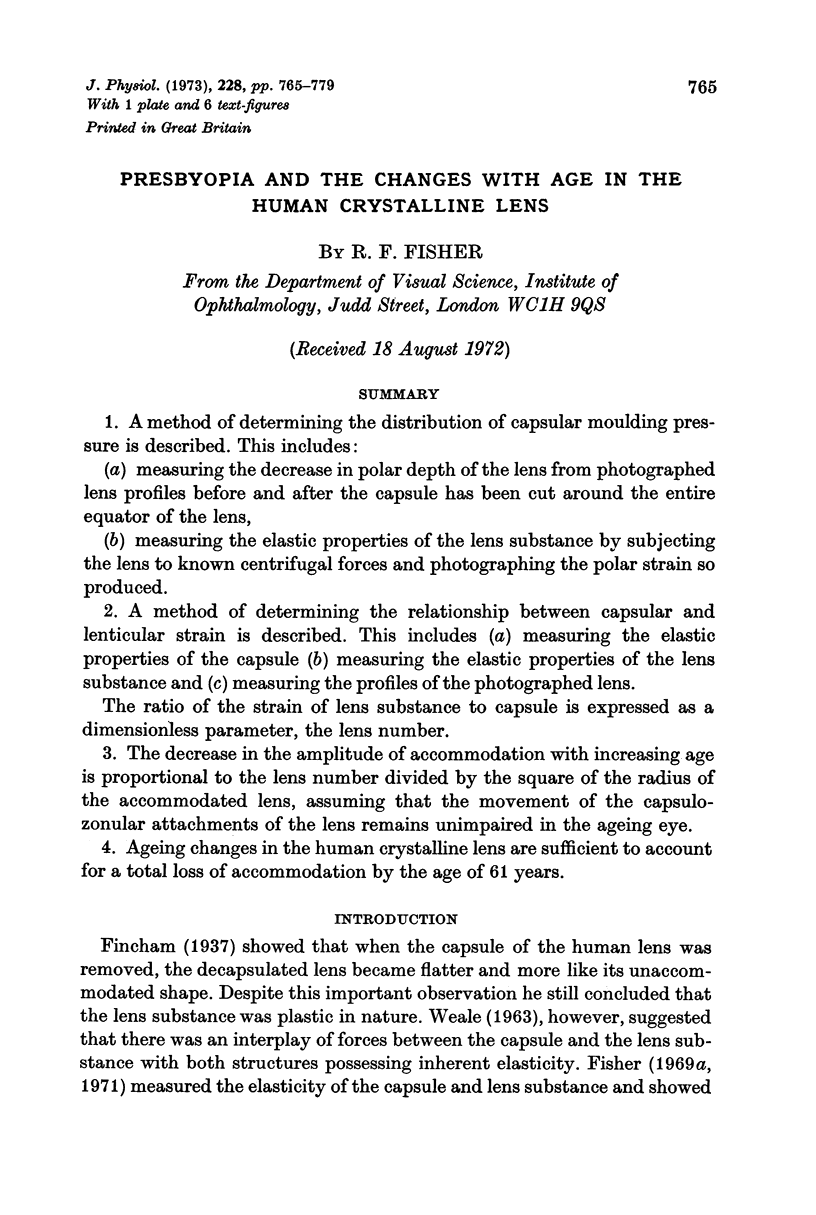
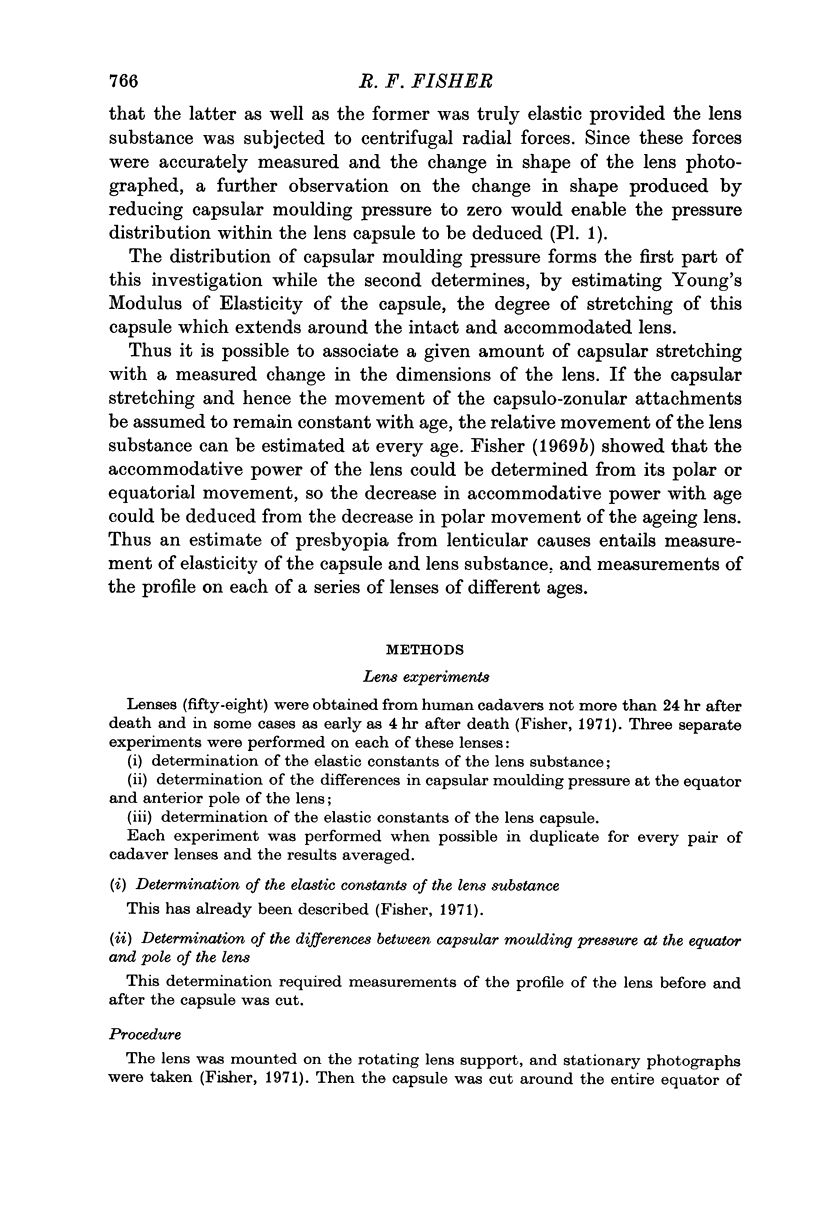
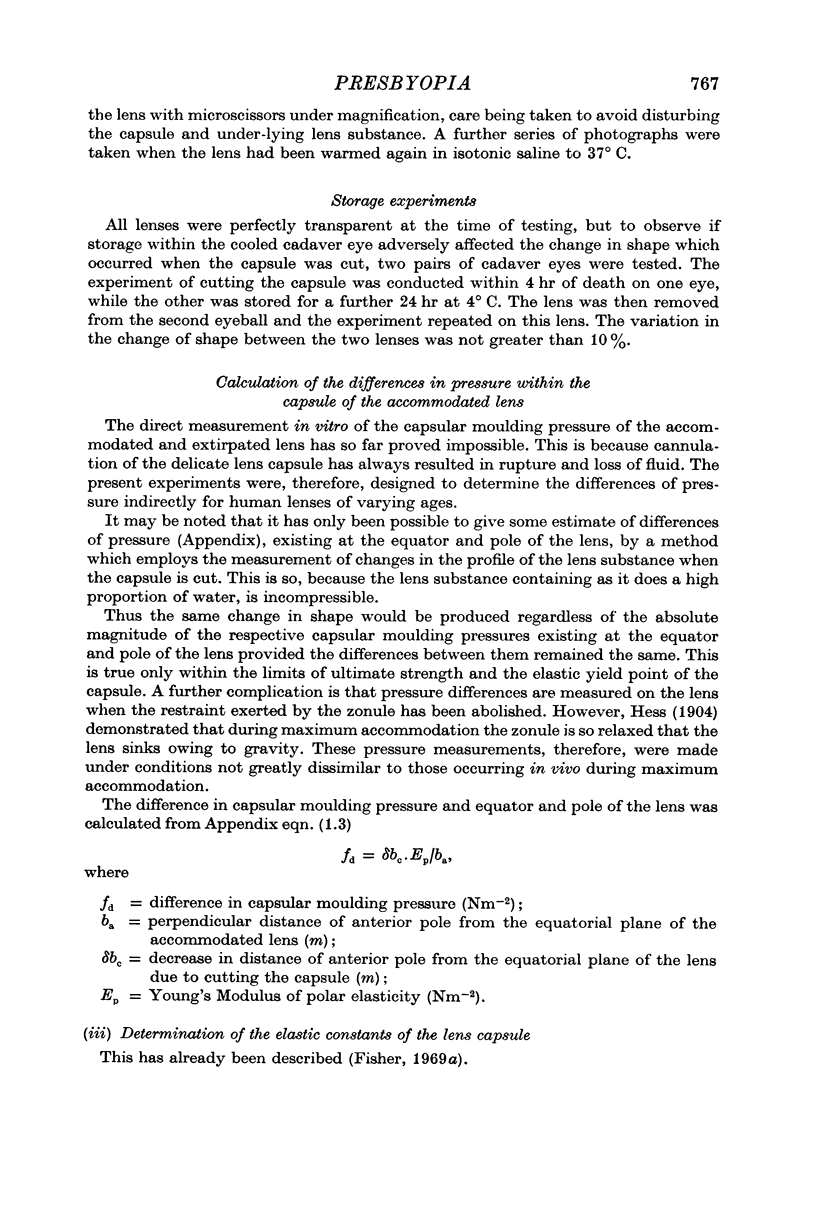
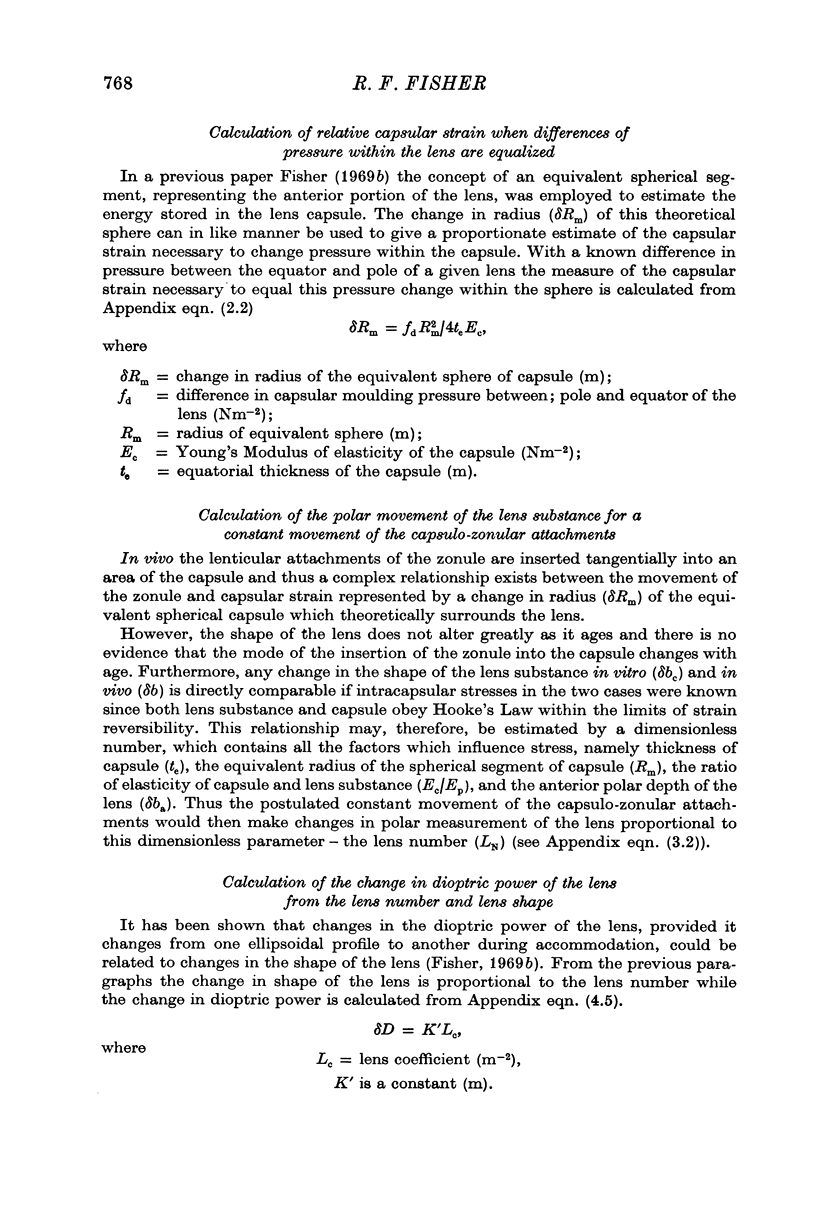
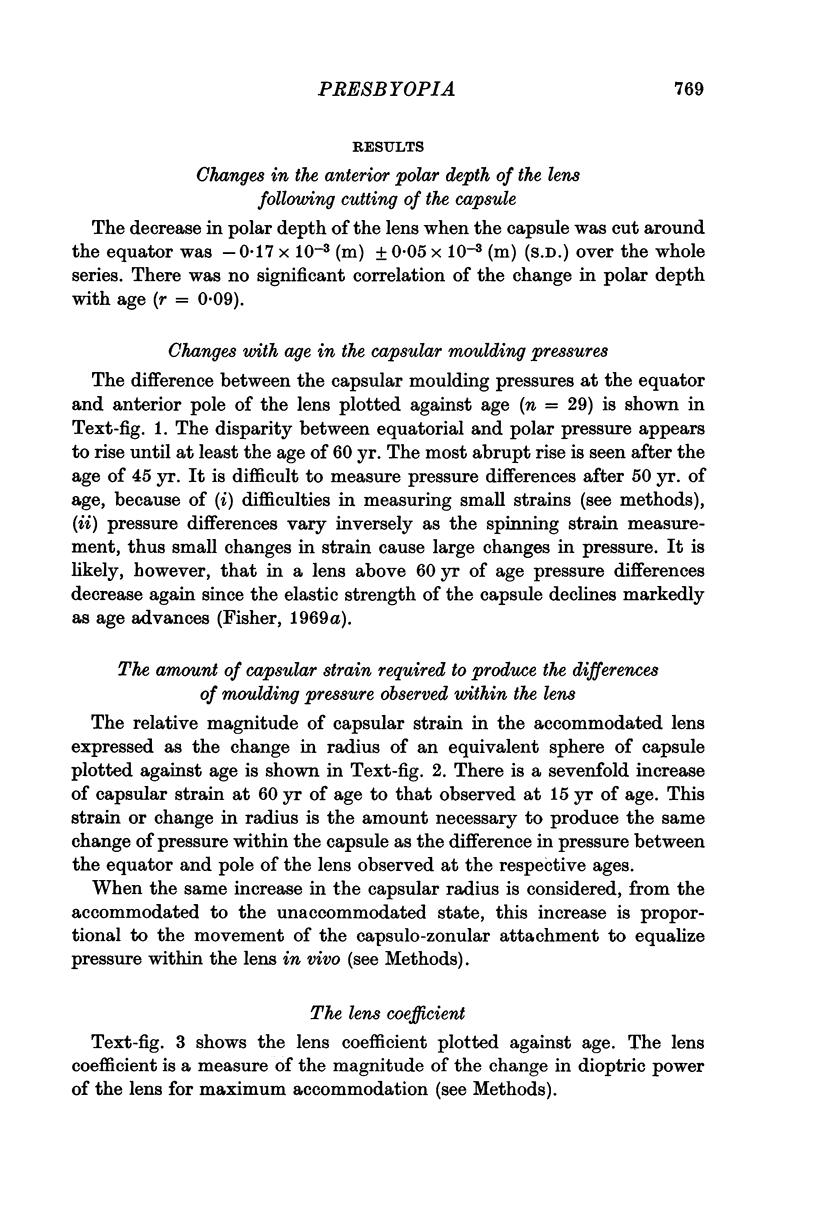
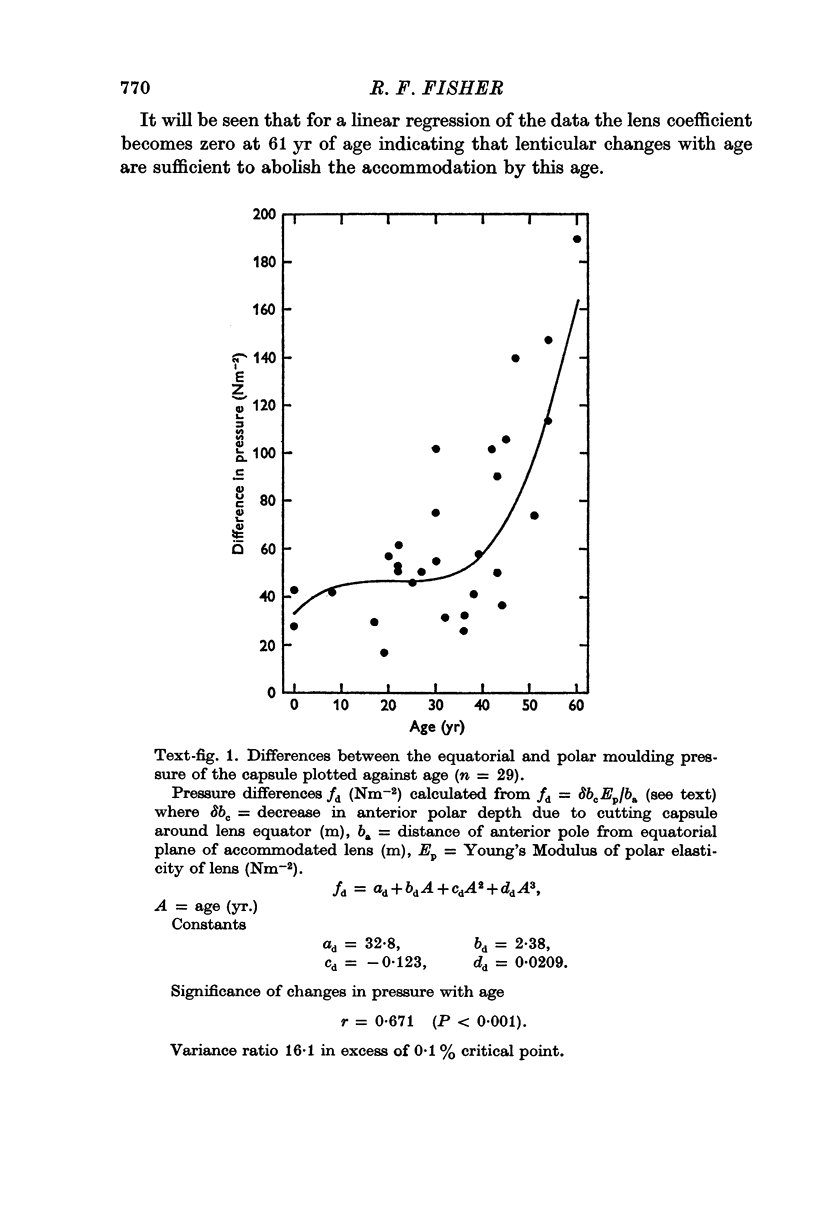
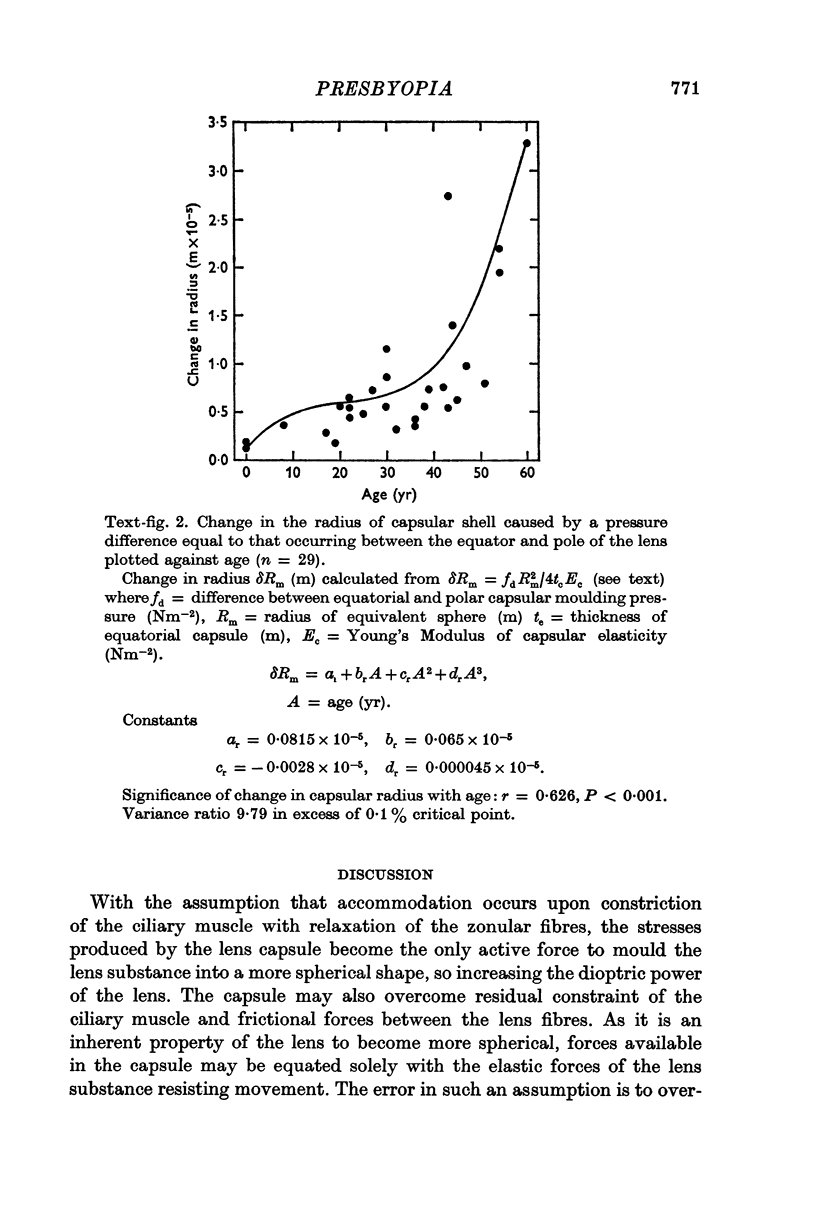
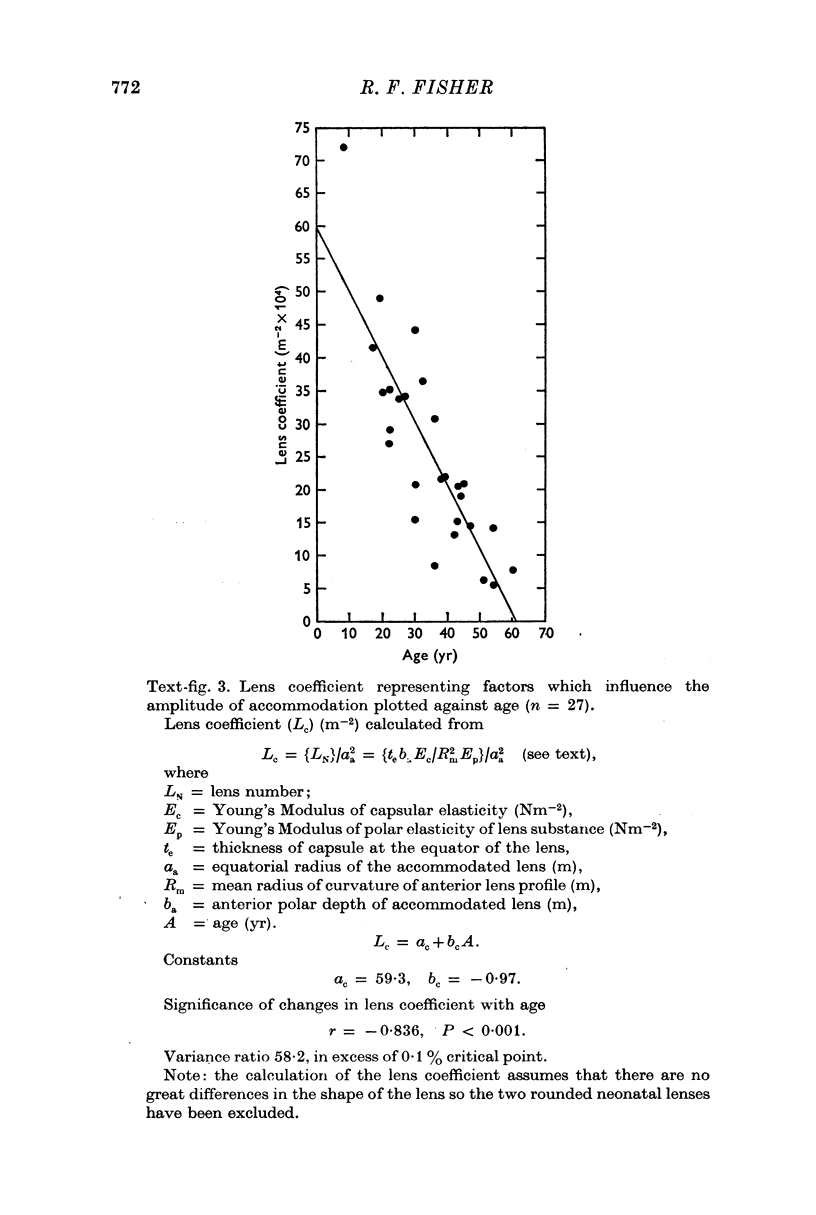
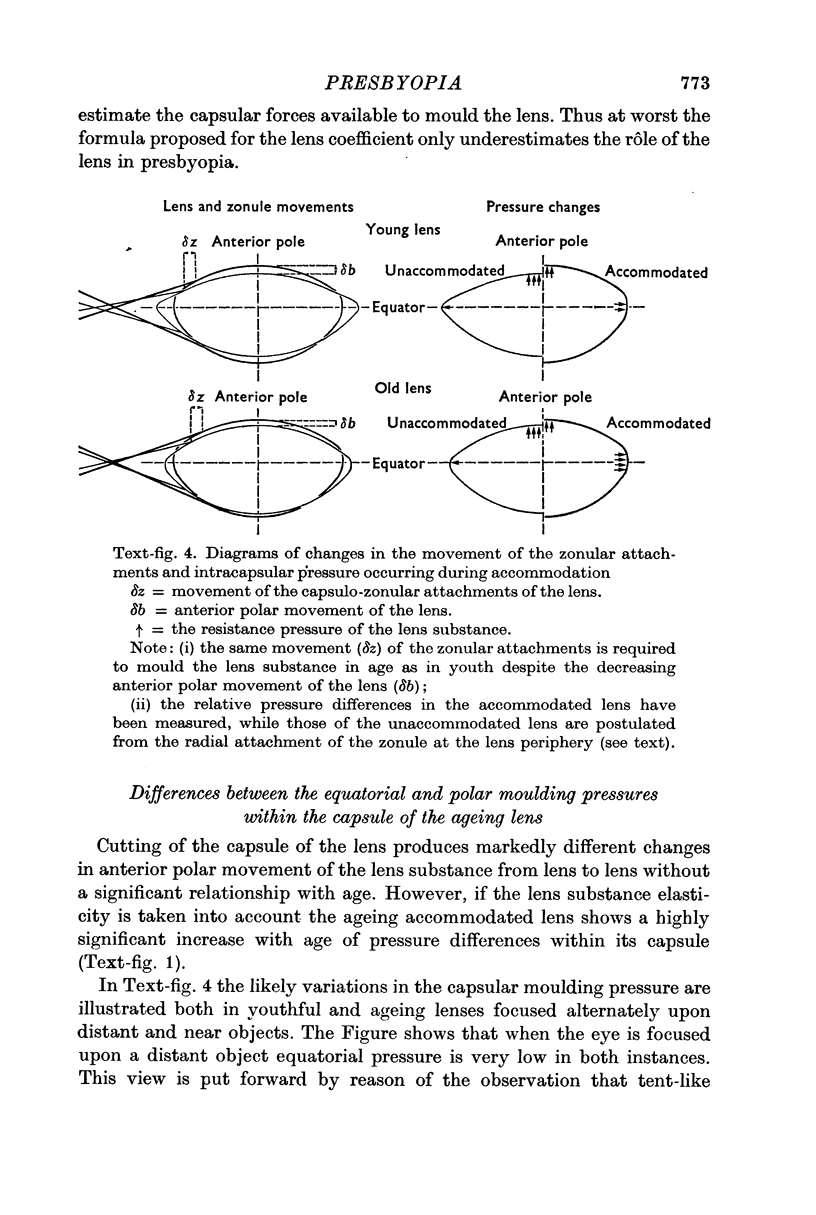
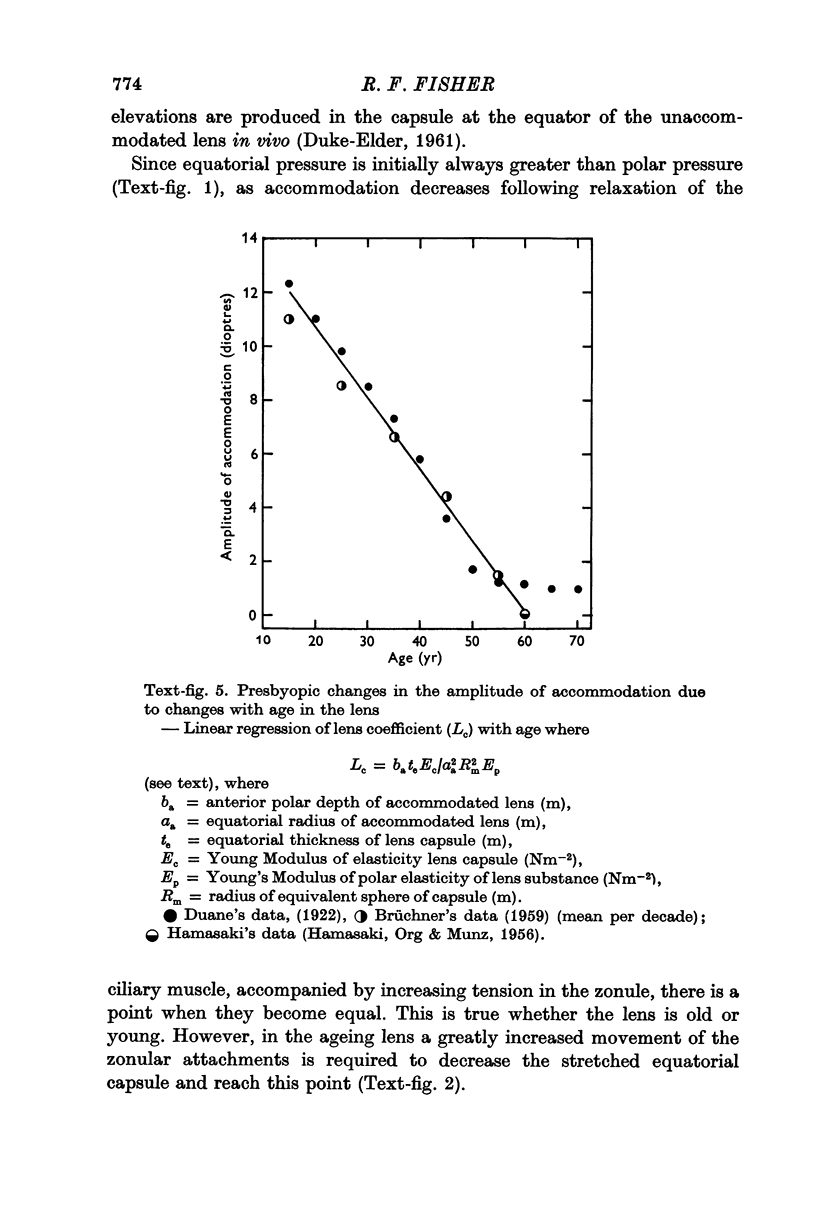
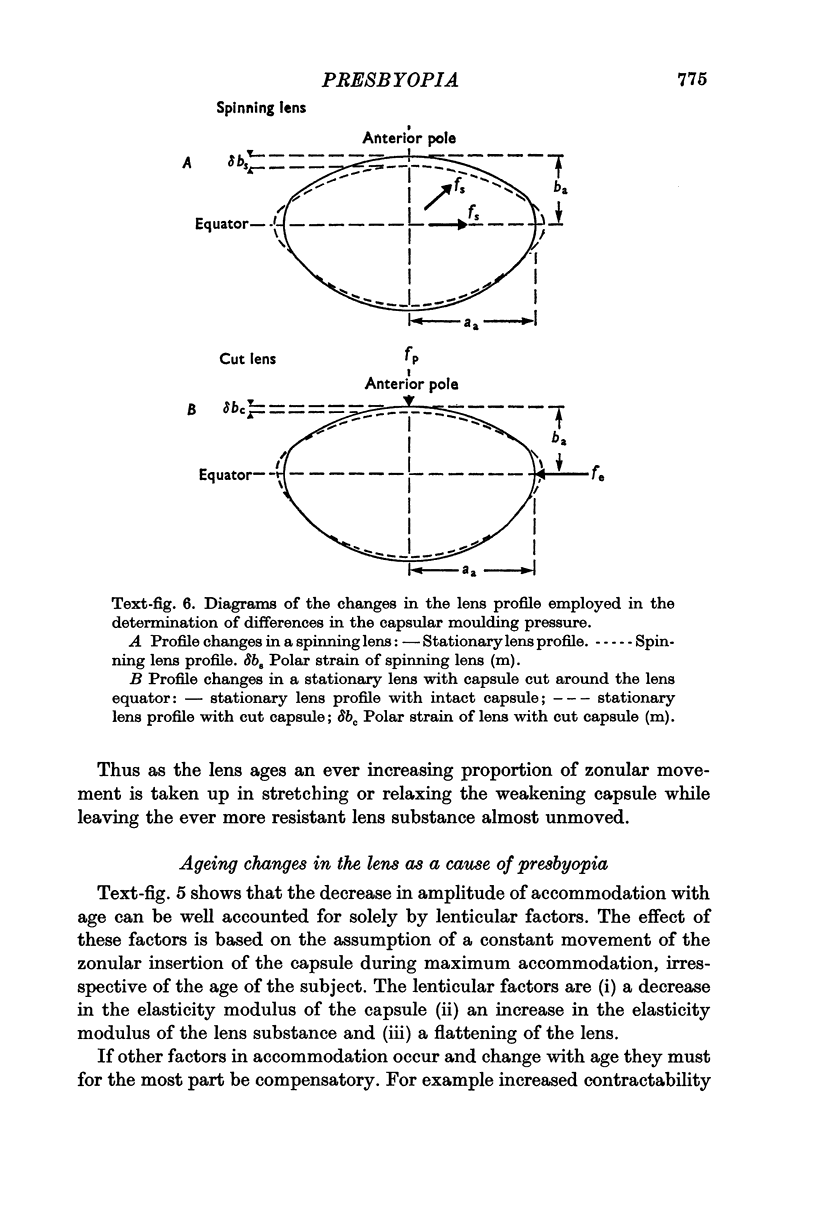
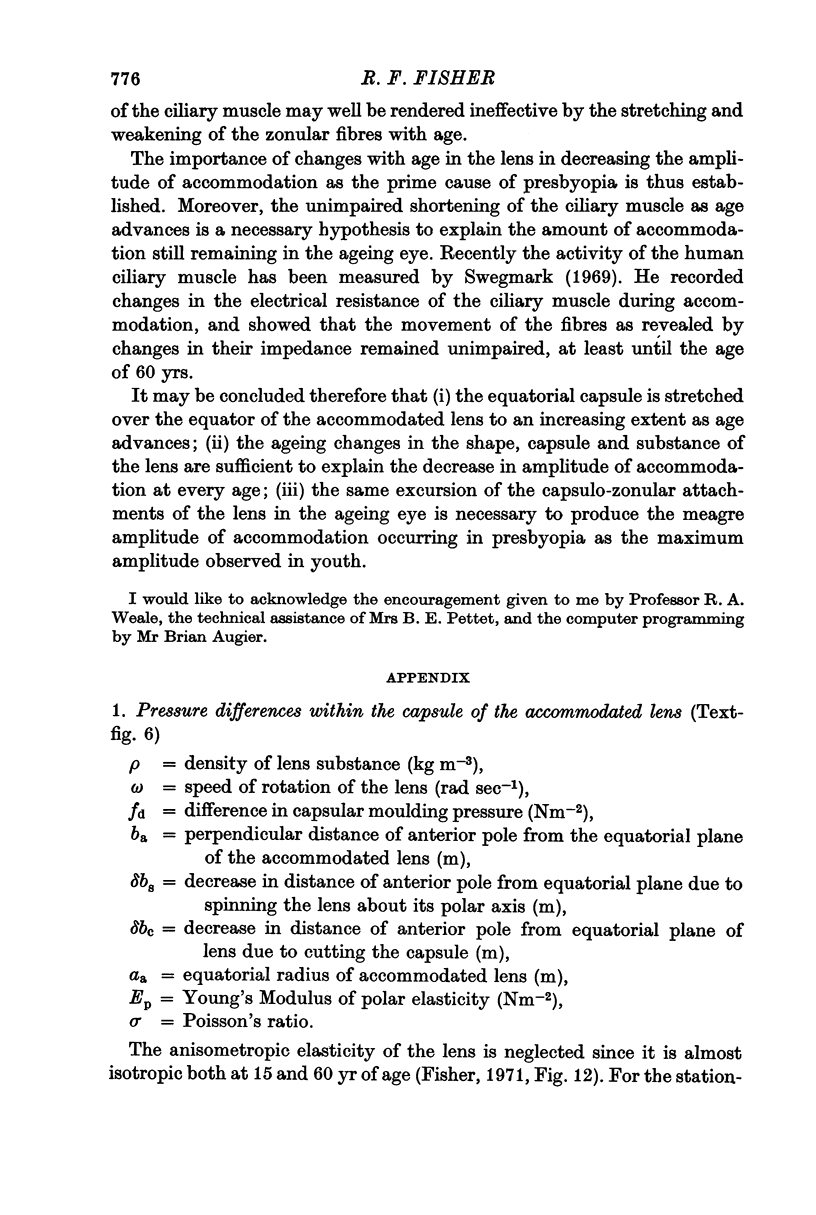
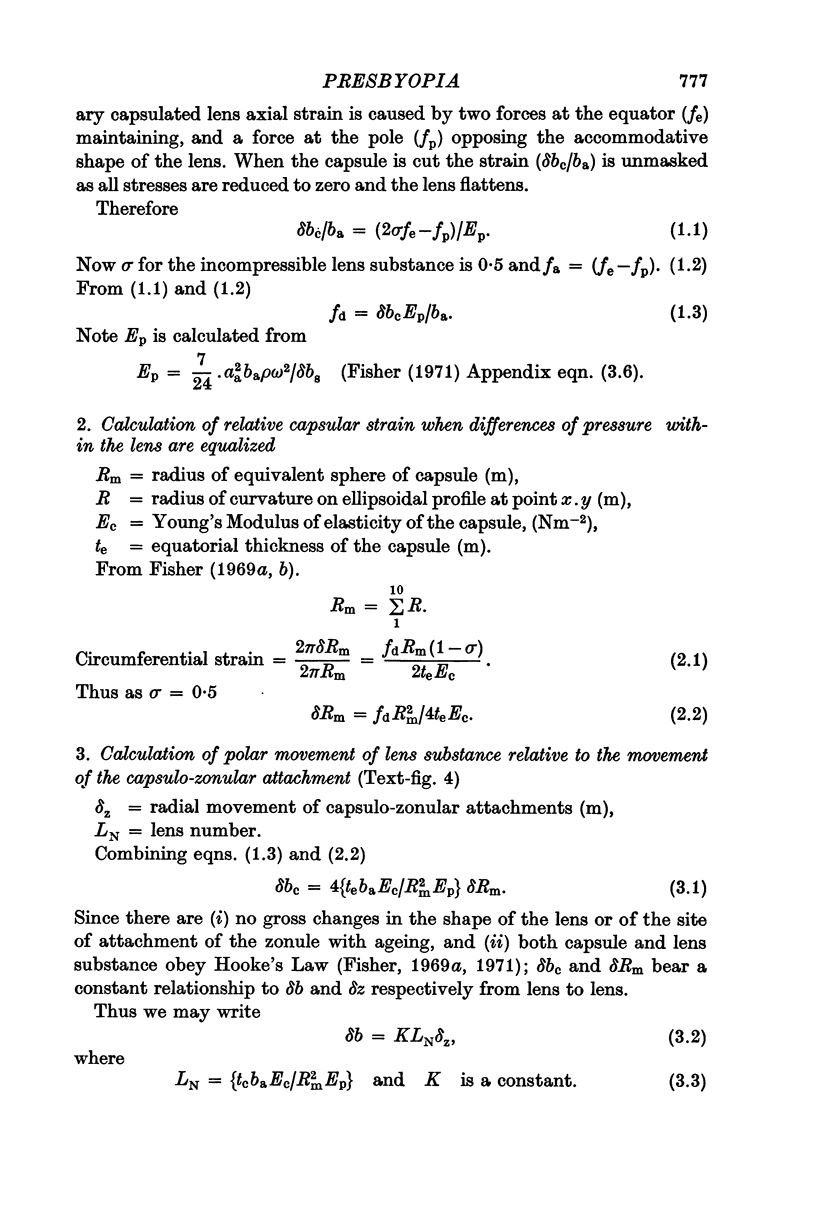
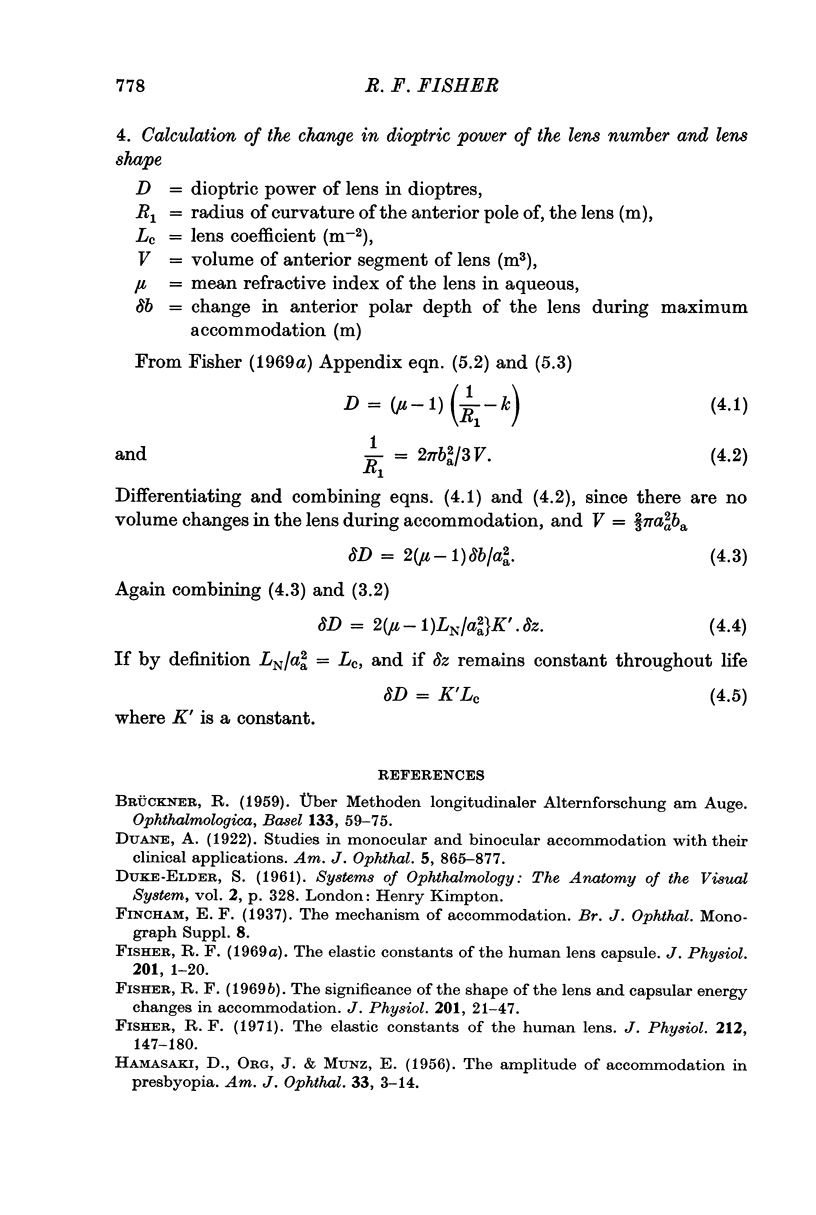
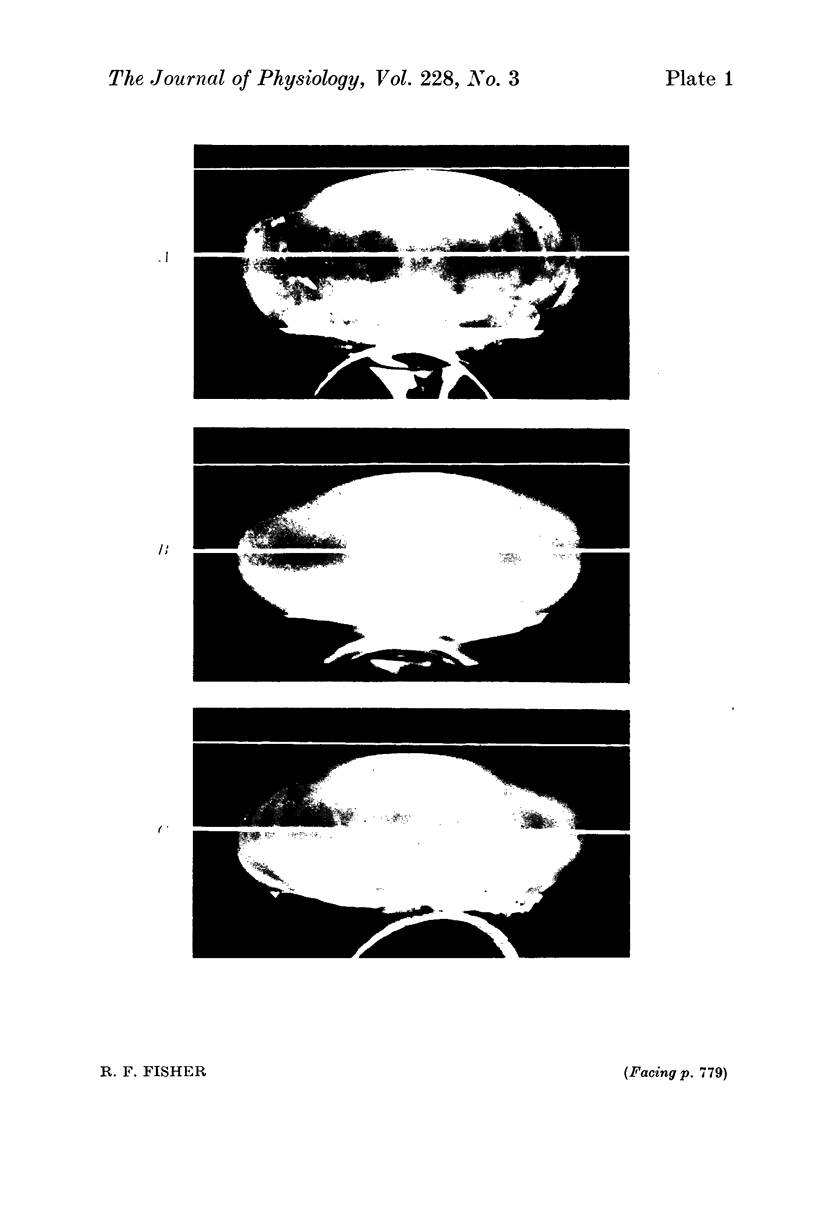
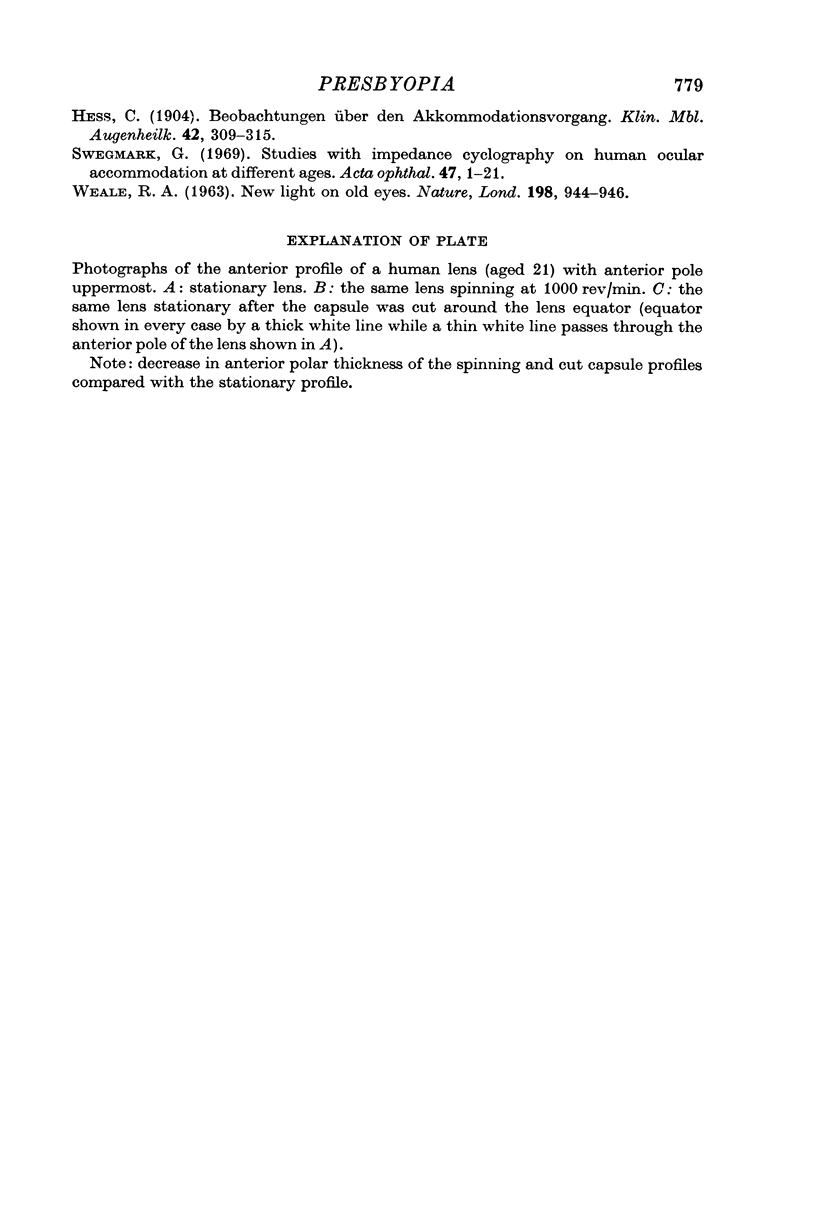
Images in this article
Selected References
These references are in PubMed. This may not be the complete list of references from this article.
- BRUCKNER R. [On methods of longitudinal aging research on the eye]. Ophthalmologica. 1959 Jul;138:59–75. doi: 10.1159/000303615. [DOI] [PubMed] [Google Scholar]
- Fisher R. F. Elastic constants of the human lens capsule. J Physiol. 1969 Mar;201(1):1–19. doi: 10.1113/jphysiol.1969.sp008739. [DOI] [PMC free article] [PubMed] [Google Scholar]
- Fisher R. F. The elastic constants of the human lens. J Physiol. 1971 Jan;212(1):147–180. doi: 10.1113/jphysiol.1971.sp009315. [DOI] [PMC free article] [PubMed] [Google Scholar]
- Fisher R. F. The significance of the shape of the lens and capsular energy changes in accommodation. J Physiol. 1969 Mar;201(1):21–47. doi: 10.1113/jphysiol.1969.sp008740. [DOI] [PMC free article] [PubMed] [Google Scholar]
- WEALE R. A. New light on old eyes. Nature. 1963 Jun 8;198:944–946. doi: 10.1038/198944b0. [DOI] [PubMed] [Google Scholar]



